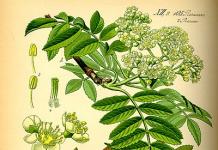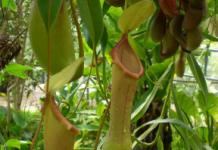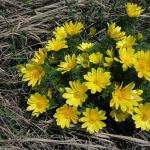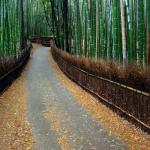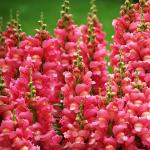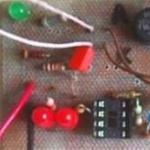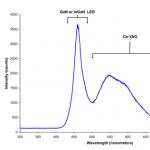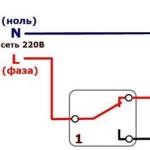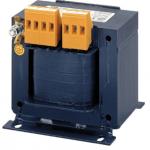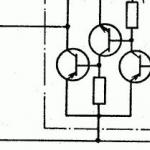For many trees and shrubs, green cuttings are one of the most productive methods of vegetative propagation. In June - early July, when the plants are in the phase of active growth, the best time for green cuttings comes.
With the help of green cuttings, many trees and shrubs can be propagated, but it must be borne in mind that the rooting ability of cuttings depends on the type and variety of the plant.
The method of propagation by green cuttings is based on the ability of stem cuttings to form adventitious roots, which is expressed to varying degrees in different plants. Evolutionarily younger herbaceous perennials and shrubs have the greatest ability to differentiate, and to a lesser extent, tree species, especially the most ancient conifers, although among them there are species with a high ability to root by green cuttings. Easily rooted are creepers (clematis, grapes, parthenocissus, actinidia, petiole hydrangea), many shrubs (mock oranges, lilacs, hydrangeas, privet, honeysuckle). For roses, it is advisable to use cuttings only for small-leaved groups, the main assortment of varietal roses grows better and overwinters on a rootstock.
The process of formation of adventitious roots on cuttings begins with the formation of callus as a reaction to injury. Callus gives the cuttings resistance to adverse environmental conditions and the penetration of infections. Callus formation is most pronounced in hard-to-root plants.
Procurement of cuttings
Green cuttings are leafy parts of the stem with one or more buds. It is preferable to take cuttings from young plants, very old mother liquors are preliminarily subjected to rejuvenating pruning. The best material for cuttings are lateral shoots formed on last year's growths in the lower, but well-lit part of the crown, which have large developed buds and do not show signs of disease. Vertically growing, as well as ankle-growing top shoots will take root worse, as they contain an insufficient amount of carbohydrates necessary for successful rooting.
In the process of harvesting cuttings, it is important to ensure the preservation of moisture in the tissues, on which the success of rooting largely depends. Shoots are cut in the early morning, when all the tissues of the plant are saturated with moisture. At all stages of working with cuttings, they should not be allowed to dry out; cut shoots should be immediately placed in water in the shade. Start cutting the cuttings as soon as possible. If transportation is required, the cuttings, without spraying with water, are placed obliquely in a container with wet sphagnum. In this package, they can be stored in the refrigerator, but the total duration of storage should not exceed 2 days.
Cuttings are cut 8-12 cm long with two or three internodes; plants with short internodes may have more. In a number of plants - roses, rhododendrons, hydrangeas, grapes, mock oranges, lilacs, cuttings with one axillary bud, called leaf-buds, take root well. Such cuttings make it possible to obtain a large amount of planting material of valuable species and varieties in the presence of a small amount of material for cuttings. When cutting at the optimum time, it is better to use the middle and lower, in the later stages - the upper part of the shoot. Cutting is done on a hard board with a very sharp tool - a grafting knife or blade that does not squeeze the tissue. The lower cut is made oblique to increase the suction surface, 1 cm below the kidney, the upper one is straight, directly above the kidney. In large-leaved plants (for example, lilac, viburnum, vesicle), to reduce the evaporation area, leaf blades are cut by ½ or 1/3, but in hard-to-root, as well as variegated, yellow-leaved, purple forms with a low chlorophyll content, this technique must be used carefully, since assimilation may not be sufficient to ensure root formation. It would be good to truncate the leaf blades even before cutting the cuttings, this will also reduce moisture loss. The cuttings are sprayed with water and placed before planting under a non-woven covering material to prevent them from wilting.
To increase the effectiveness of rooting, simple techniques are used: cutting the bark near the buds by 2 mm, bending the branches, banding with copper wire or etiolation of the shoots. All these measures help prevent the outflow of carbohydrates and growth substances - auxins from the shoots. Etiolation is carried out by tying the shoot with foil, paper or black non-woven material 2-3 weeks before cuttings. In the shoot, the metabolism is redistributed and the efficiency of rooting increases.
Rooting Efficiency Improvement Methods
It is known that the process of root regeneration is regulated by growth substances - auxins, carbohydrates and nitrogenous substances. In many species and varieties, under the influence of growth regulators, the percentage of rooted cuttings, the number of roots, the quality of plants increase, and the time of rooting is reduced. Some hard-to-root crops become easy-to-root, but sometimes, depending on the biological characteristics of a particular species or variety, there may be no reaction to stimulants.
Good root stimulants are:
Heteroauxin (indoleacetic acid (IAA)) - from 50 to 200 mg / l,
Kornevin (indolylbutyric acid (IMA)) - 1 g / l of water,
Zircon (a mixture of hydroxycinnamic acids) - 1 ml / l of water.
Processing with stimulants should be done in the dark, at a temperature of + 18 ... + 22 degrees. The cuttings are immersed in the solution so that the leaves are not processed. The concentration of the solution and the exposure time must be maintained accurately, their excess may lead not to an increase in the effect, but to a toxic effect. Therefore, it is better to use Kornevin in solution and withstand strict exposure for 16-20 hours, and not to dust the cuttings with it.
Planting cuttings
Finished cuttings are planted in pre-prepared breeding ridges, which are arranged in the shade (in most cases, the optimal illumination for successful rooting is 50-70%). Rooting proceeds better when the temperature of the substrate is 3-5 degrees higher than the ambient temperature. To create such conditions, biological fuel is laid at the bottom of the ridge - horse manure with a layer of 25-30 cm, which, decomposing, forms heat and provides lower heating to the cuttings. Next, fertile soil is poured with a layer of 15 cm, and finally, a substrate for rooting with a layer of 3-4 cm. and bactericidal properties. It is useful to shed the substrate with one of the preparations - Radiance, Baikal, Revival, Fitosporin to suppress pathogenic microflora. The same preparations can be used in the process of caring for cuttings, adding to irrigation water 1 time in 1-2 weeks.
The cuttings are planted at a distance of 5-7 cm from each other to a depth of 1.5-2 cm. From above, the ridge is covered with glass, plastic wrap or non-woven covering material along arcs at a height of 25 cm from the cuttings. Each of these materials has its drawbacks - in the heat, under polyethylene and glass, the temperature can rise too much, and it is more difficult to maintain high humidity under a non-woven covering material. For most trees and shrubs, the optimum temperature is + 20 ... + 26 degrees and humidity 80-90%. In industrial environments, humidity is maintained by foggers that spray moisture at regular intervals. At home, the cuttings are sprayed with water several times a day. Cuttings should be regularly examined, fallen leaves and unattached specimens should be removed.

With the beginning of rooting, the plantings are ventilated, opening the film first for 1-2 hours, each time increasing the time, the number of sprayings is reduced. After hardening the rooted cuttings, the film is removed. A month later, they are fed with liquid complex mineral fertilizer.
A small number of cuttings can be rooted in boxes by pouring 8-10 cm of soil and 1.5-2 cm of river sand. 1-3 cuttings can be rooted in a pot, covered with a transparent plastic bottle with a cut bottom. Removing the cap from the neck, it is convenient to carry out ventilation. It is convenient to move pots or boxes with rooted cuttings for the winter to the basement for the winter.
The cuttings rooted in the cuttings are left in the ground, covered with a dry leaf for the winter, or dug up and stored in the refrigerator or dug in the basement, at a temperature of +1 ... +2 degrees.
In the spring, the cuttings are transplanted into the "school" for 2-3 years for growing, then transplanted to a permanent place.
The table presents data on the effectiveness of green cuttings in different crops*:
|
plant type |
Cutting period |
Rooting temperature |
Rooting percentage |
rooting time, days |
The need for root stimulants |
|
|
polyanthus, climbing small-leaved, patio, miniature |
Budding - the beginning of flowering (semi-woody cuttings) |
on average, 83.9%, in some varieties up to 100% |
from 10-15 to 28 |
|||
|
Common lilac: Early varieties Late varieties C. hungarian S. Wolf C. hairy S. Zvyagintseva |
flowering phase flowering phase Attenuation, but not stopping the growth of shoots |
IMC 25-50 g/l |
||||
|
Clematis |
Budding - the beginning of flowering (cuttings from the middle part of the shoot) |
40-100% depending on the variety |
IMC 25-30 g/l, 12-24 hours |
|||
|
Chubushnik |
Attenuation of shoot growth - the beginning of flowering |
|||||
|
Spring flowering species Summer flowering species |
Beginning - ser. VI Con. VI - ser. VII |
from 30 to 100% in different species |
IMC 25-100 g/l increases rooting by 10-15% |
|||
|
forsythia |
F. ovoid |
Attenuation of shoot growth (first half of VI) |
||||
|
K. ordinary "Roseum" (Buldenezh) K. pride |
Mass flowering period |
IMC 25-50 g/l or heteroauxin 50-100 g/l |
||||
|
Cotoneaster |
K. brilliant K. horizontal |
Con. VI - beginning. VII |
||||
|
D. rough |
Beginning VI - ser. VII |
0.01% IMC, 16 h |
||||
|
Privet |
B. vulgaris |
Ser. VI - beginning. VII |
||||
|
D. male D. offspring |
||||||
|
Honeysuckle |
J. offspring J. Hekrota J. Tatar J. blue (f. edible) |
End of shoot growth |
||||
|
Hydrangea |
G. paniculata D, treelike G. Bretschneider G. petiolate |
Responsive to IMC |
||||
|
Rhododendron |
R. pontic R. katevbinsky R. japanese |
IMC 50 mg/l Opudr. 2% IMC 0.005% IMC, 17 h |
||||
|
Actinidia |
A. acute A. kolomikta |
|||||
|
C. tannery |
Con. VI - beginning. VII |
Terms of harvesting cuttings of ornamental shrubs
Reproduction of decorative bushes is carried out by green and lignified cuttings. For various types of bushes, favorable periods of grafting can be distinguished:
- for lilac and mock orange - flowering period (May);
- for barberry, buddley, hydrangea, cotoneaster and other deciduous species - a period of intensive growth of shoots and budding (June);
- for honeysuckle - the period of green fruits (June - early July);
- for conifers - a dormant period (late autumn - early spring) or after the end of active growth (July).
Procedure for harvesting cuttings
Suitable for cuttings are annual shoots from the mother bush, whose age is 3-5 years. Choose well-developed semi-lignified shoots with green bark, 7-8 mm thick (with a pencil). Too flexible and thin branches are rejected.
We check the green shoot for readiness for cuttings
You can check the readiness by the sound when breaking the branch. In honeysuckle and many deciduous shrubs, a characteristic crack is heard when a branch is broken. If it is not there, you should choose another branch or postpone harvesting cuttings for a week.
The middle and apical part of the shoot is cut into cuttings. Do this early in the morning or in cloudy weather, when the evaporation of moisture from the plants is minimal. The length of the cutting is 8-10 cm, and the number of buds on it depends on the internodes of the shoot:
- for short ones - 3-5 kidneys;
- for long ones - 2 kidneys.
Sections are made at a distance of 0.5 cm from the upper and lower kidneys with a sharp knife overhang with a sharp movement. The upper cut is even, with a minimum area for evaporation of moisture from the cutting. The lower one is at an acute angle, about 45º, from the side opposite from the kidney. In this case, the kidney remains on the side of the formed wedge. The leaves of the lower kidney are removed, and the upper one is cut in half. In large-leaved species of bushes, the upper leaves are shortened by 2/3.
Lignified cuttings are cut in autumn and immediately planted in the ground under cover, or lowered into the cellar until spring. Their survival rate is usually lower than that of summer (green).
Rooting cuttings
Planted cuttings for rooting in boxes or pots with sand-peat soil mixture (1: 1). If there is a greenhouse or greenhouse on the site, you can use them by pouring a five-centimeter layer of a mixture of peat and sand over the soil.
Cuttings of coniferous and other hard-to-take-on bushes (for example, magnolias) before planting must be soaked in water with the addition of a phytohormone: Kornevin or Heteroauxin, for 1-2 hours. Cuttings are planted obliquely (at an angle of 45º) at a distance of 5-10 cm, deepening by 1-3 cm.
The boxes are covered with film or glass and placed in a shady place (for example, under trees). If it is not possible to install boxes in a shaded area, the film or glass is whitewashed with a solution of lime or covered with burlap.
The air temperature of 22-25º and high humidity (80-85%) are considered optimal for the formation of roots on cuttings. Planting cuttings on hot days is sprayed several times a day, and the soil is constantly kept moist. When condensation forms, the film (glass) is slightly opened to ventilate the cuttings for 20-30 minutes a day.
It will take 2-3 weeks for the cuttings to root, after which lateral shoots grow from the buds. During this period, the duration of ventilation of the cuttings is increased. When the seedlings get stronger, the shelter is removed.
Planting seedlings from cuttings
Rooted cuttings are left to winter in boxes, additionally covered (with spruce branches, sawdust, burlap), and planted in a permanent place next spring. Saplings of some fast-growing frost-resistant bushes can be planted in the fall, providing them with a reliable winter shelter, but cuttings of conifers root for 2-3 years.
Observing the simple rules of grafting, it will not be difficult to grow strong seedlings of ornamental bushes on your own. At the same time, young plants will fully preserve the varietal qualities of mother bushes and save your budget on the purchase of expensive planting material.
prepared by Ziborova E.Yu.
Cuttings, as one of the methods of vegetative propagation of plants, make it possible to grow a plant you like at no special cost and in a relatively short time, if you are lucky enough to acquire its shoot.
Woody plants are propagated mainly by stem cuttings and partly by root cuttings. Cuttings of many woody plants take root with difficulty, so fogging installations are used in nurseries to maintain optimal rooting conditions: high air humidity combined with low soil moisture. Processing cuttings before plantinggrowth promoters
(phytohormones) also increases the chances of their successful rooting, accelerates the process of root formation on cuttings (especially difficult-to-root tree species) and helps to obtain a more powerful root system.
reproduction woody plants green cuttings has recently become one of the main in ornamental gardening.
The best age of mother plants from which green cuttings are cut is considered to be a period of 5 to 10 years; cuttings of hard-to-root plants are taken from younger (two-three-year-old) plants.
For each species of woody plants, it is important to establish the most favorable cutting period, which is determined by the calendar period and the degree of lignification (young shoots easily rot, their unripened tissue is not able to form roots). In the middle zone of the European part of the former USSR, the period from late May to early July is considered optimal for rooting green hardwood cuttings. In the early stages of this period, rooting is better, in addition, the entire shoot is used for cutting cuttings, in which the lower part is semi-lignified and the upper part is green. In the later periods of this period, when the hardwood finishes growth, almost a third of the shoot harvested for grafting does not go into action.
The best terms for green cuttings of varietal lilacs and mock oranges occur during flowering (cuttings should not be cut from shoots that have flowers or flower buds), and for a number of other species and forms of hardwoods - during the period of intensive growth of shoots. Summer cuttings in a greenhouse with strong lateral shoots of the mother plant "with a heel" or apical cuttings are recommended for barberry, euonymus, buddleia, weigela, wolfberry, hydrangea, honeysuckle, cinquefoil, viburnum, cotoneaster, broom, rhododendron, etc. It is also practiced to propagate by summer cuttings in a cold greenhouse there are rare plants, which is much more difficult than autumn cuttings in the open field.
The conifers are cut either in spring, before the buds begin to swell (for example, shoots of thuja western, spruce, fir and junipers are harvested from late April to early May) or in summer, when they finish active growth (from mid-June to mid-July). Most of the conifers and maples, oak, linden, birch, and other trees take root when cuttings are difficult (their callus often reaches large sizes, greatly depletes the cutting and prevents root formation).
The shoots of the current year are cut into cuttings when they are still quite flexible and the bark is green. In most species of woody plants, the cuttings are cut from the middle part of the shoot, discarding the too soft upper part and the too lignified lower part. When cutting a cutting from the upper part of a full-fledged shoot of deciduous and coniferous species (the so-called apical cutting), the apical bud is left on the cutting.
Cutting shoots into cuttings is best done early in the morning or on a cloudy day (to reduce evaporation from the cuttings); large leaf blades are shortened by half and cut shoots are placed with their lower ends in a vessel with water.
For successful root formation, the length and thickness of the cutting are important (very thin cuttings are undesirable). The length of the cutting is determined by the size of the internodes: from shoots with short nodes, cuttings are cut with 3-4 internodes, and from shoots with long nodes - with 2 internodes. Usually the length of green cuttings ranges from 3 to 12 cm (longer cuttings take root worse), on average it is 8-10 cm.
Holding the prepared shoot over a canopy, cuttings are cut from it with a sharp knife: the upper cut of the cutting is made straight - perpendicular to the longitudinal axis of the cutting (to reduce the evaporating surface) directly above the kidney, and the lower cut is oblique, 0.5 - 1 cm below the base of the kidney (on opposite side of it) the lower leaves are removed from the cuttings. However, when rooting cuttings in a nursery using an artificial fog plant, the top cut of the cuttings is made slanted (so that water can easily drain from them).
The cut cuttings are placed before planting in a container with a small amount of water, sprayed and covered with a damp cloth. Cuttings of some plants that do not tolerate prolonged exposure to water are placed in wet peat or plastic wrap. Freshly cut cuttings of coniferous plants (pine, spruce, larch) must be kept in water for 2-3 hours (because resin is released on the cut surface of their cuttings, which prevents the absorption of water from the substrate after planting); before planting, slightly update the cut. On the cuttings of coniferous plants, to facilitate root formation, a longitudinal split of the base is often made to a depth of 1 cm (so that a large surface of the cambium is exposed and its cells form roots more easily).
For planting a large number of green cuttings, cold greenhouses or greenhouses are usually used; one or more cuttings can be planted in a pot. A layer of fertile loose earth mixed with sand (10-15 cm) is poured at the bottom, and a layer of coarse-grained washed sand (3-5 cm) is poured on top. Well proven for rooting cuttings of the mixture: peat with sand in a ratio of 1:1 or 2:1; peat with vermiculite or peat with perlite in equal proportions.
Cuttings with a lower part treated with a phytohormone are planted vertically in the soil of a greenhouse under a wooden peg, tightly squeezing the substrate around the cutting. The depth of planting depends on the size of the cutting and the breed: they are usually planted at a depth of 1-1.5 cm, and the cuttings of most ornamental shrubs - at a depth of 2.5 cm. The distance between the cuttings in the rows is 4-7 cm, between the rows is 5-10 cm After planting, the cuttings are carefully watered through a fine sieve, covered with a frame and shaded. The optimum temperature for rooting cuttings of most tree species is 20-25 degrees; soil temperature for hard-to-root species should be 3-5 degrees higher than air temperature.
During the period of rooting of the cuttings, the frames are opened for watering 2-4 times a day (less often in cloudy weather, more often in sunny weather). If the stalk is planted in a pot, then for its better rooting in a pot they build "mini greenhouse"; periodic spraying of the cutting with the addition of "Epin" also speeds up the rooting process.
Shortly after planting, callus begins to form in the lower part of the cutting (an outgrowth-neogenesis of cells on the wounded surface of the plant), and then roots appear. Rooting times for cuttings of different tree species are different. After rooting the cuttings, the buds begin to grow; when small shoots are formed, the greenhouses begin to open a little to harden young plants. With good shoot growth, the frames are opened more and more often and the cuttings are ventilated for longer and longer, and then removed completely. Usually in late August - early September, successfully rooted cuttings are fully opened. Well-rooted cuttings of fast-growing hardwoods can be transplanted into open ground in autumn for their best development; slow-growing conifers are often grown at the rooting site for 2-3 years.
Care for developing cuttings consists in shading from the hot sun, in regular watering, in weeding, in loosening the soil; for the winter, young plants are spudded and mulched (roses are additionally covered with leaves from above with a layer of 10-15 cm). With the temperature set at 0 + 2 degrees, a reliable frame is placed over the rooted conifers and roses and covered with a film; with a further decrease in temperature to minus 3-5 degrees, leaves or sawdust are poured onto the film with a layer of 5-7 cm and another layer of film is placed on top. In the spring, as the snow melts, the shelter is gradually removed and a covering material is pulled onto the frame over the plants to protect it from sunburn. Well-rooted cuttings of winter-hardy conifers and deciduous plants can winter without additional shelter - under natural snow cover.
When growing trees and shrubs lignified("winter") cuttings for cutting cuttings, strong, ripened annual shoots are used (for poplars and willows - sometimes even biennial and older). Lignified cuttings often propagate mock orange, privet, honeysuckle, hydrangea, snowberry, tamarix, spirea, buddley, weigela, forsythia, action, elderberry, kerria, cinquefoil, currant.
Shoots of woody plants are harvested for cuttings either in autumn after leaf fall, or during winter dormancy (in November-February), or in early spring before buds swell. Cuttings taken from young shoots from the lower part of the trunk of the mother plant take root better. For harvesting cuttings, it is good to use the shoots that form after pruning the tree "on the stump".
It is easiest to root cuttings of hardwoods by planting them in the fall after leaf fall in open ground (in the partial shade of the garden, in drained soil). The cuttings are cut from the lower and middle lignified parts of the shoots immediately before planting (in this case, "grinding" of the lower cut is allowed). The thickness of the cuttings is usually 7-12 mm, the length is 20-30 cm (for rooting in greenhouses, the cuttings are cut 4-10 cm long). At a cutting planted in open ground, an upper oblique cut is made (so that rain rolls down) 0.3-0.5 cm above the kidney, and the lower straight cut is directly below the kidney. For planting willows along the wet banks of rivers and ponds, cuttings-"stakes" are often used, up to 1.5 meters long and 5-7 cm thick.
In deciduous plants, cuttings cut in autumn (after the period of leaf fall) no longer have leaves, and in evergreens, leaves are removed from the lower and middle parts of the cutting (only the upper third of the length of the cutting remains leafy). The end of the cutting is treated with a phytohormone and planted in a prepared groove in open ground. Grooves are dug 15-20 cm deep with one vertical wall; the distance between the grooves is 15–20 cm. A layer of a mixture of peat and sand 2–3 cm thick is poured onto the bottom of the groove. earth. Then the groove with the handle is covered with soil in several stages, compacting each layer until the soil in the groove is level with the ground. Then the surface of the soil around the cutting is loosened, constructing a hole, and watered abundantly, and after the water has been absorbed, the earth is poured into the settled recess of the groove. It is advisable to compact the soil around the cuttings after frost. Successfully overwintered and well-rooted cuttings are transplanted to a permanent place a year after planting.
Shoots harvested in autumn and winter for spring cuttings and planting are tied into bunches and stored in the basement dug in the lower part in wet sand, or in snow heaps, or in a refrigerator (at a temperature of 1-3 degrees). In early spring, cuttings are cut from them, treated with phytohormone and planted in deeply cultivated (40-45 cm) soil with ribbons at a distance of 15-20 cm in a row - vertically or slightly obliquely, deeply (up to the upper kidney), tightly squeezing the ground around the cuttings; watered abundantly.
prepared by Ziborova E.Yu.
Propagation of plants is a laborious and not always cheap process. But many gardeners dream of acquiring a plant they like. Therefore, reproduction with the help of green cuttings has become a real leader among the various methods of plant propagation in gardening. This method makes it possible, in the presence of an escape of the desired pet, to grow almost all woody plants relatively quickly and at a minimum cost. In addition, this method allows, in a shorter time than, for example, when propagating by seedlings, to obtain adult plants capable of flowering in a couple of years.
This article will focus on the basic principles and methods of green cuttings, various specific features and the most optimal periods for carrying out this procedure for both coniferous and deciduous tree varieties, as well as the main stages of caring for rooting cuttings.
Most woody plants can be propagated by stem cuttings and less often by root cuttings. The optimal age for a donor plant from which green cuttings will be cut is from 4-5 years old to 9-10 years old. At the same time, it should be taken into account that the worse the plant lends itself to rooting, the younger the mother plant should be (optimally 2-4 years old).
The main guarantee of successful grafting of any kind of plant is the timely implementation of this procedure, i.e. the correct choice of the term in accordance with the climatic conditions, calendar terms of growth and lignification of the plant: immature young shoots are often not able to form a root system and simply rot, and if tightened with cutting cuttings, their lower, almost lignified part will be unusable. On average, for cuttings of deciduous trees, there will be a universal period from late spring to mid-summer.
Cuttings of coniferous plants
The optimal period for grafting conifers is the period from April to May (during the period when the buds have not yet begun to actively swell) or from June to July (when the plants are already undergoing a period of active growth).
A specific feature of coniferous plants is the ability to release resin at the cut sites. Therefore, when cutting them before planting, it is imperative to keep the planting material for several hours in water - this will improve the absorption of moisture after planting. Before planting, the cut needs to be updated.
In order to help the shoot form a root system, it is recommended to expose a large area of the cambium, which will greatly increase the likelihood of root formation. To do this, the cutting is split at the bottom about 1 cm along the plant.
You should also know that only the main shoot is suitable for cutting spruce, Douglasia, fir, since the side shoots are not able to form symmetrically-tiered branches.

Cuttings of flowering shrubs
The best period for cutting flowering shrubs is the period of their flowering. At the same time, it is worth considering that it is not recommended to take branches on cuttings that have flowers or flower buds.

Basic rules for cuttings:
- Mother plants must be young and absolutely healthy.
- Work on cutting cuttings is carried out with a clean and very sharp knife.
- Fresh young shoots are cut into cuttings, which have not yet hardened and have a green bark.
- To obtain cuttings, the middle part of the shoot is mainly used, since the lower part is often already too lignified, and the upper part is still very soft.
- When cutting with an apical cutting (when the upper part of a full-fledged process of both deciduous and coniferous is used as a cutting), the upper kidney should remain on it.
- In order to minimize moisture loss by cuttings, the procedure is recommended to be performed either on days when there is no bright sun, or in the early morning.
- If there are large leaves on the handle, they are recommended to be cut in half.
- Freshly cut cuttings are lowered into a vessel with water.
- To determine the proper length of the cutting, it is good to know about the size of the internode: in plants whose nodes are not too large, the cuttings should have 3-4 internode, and in plants with longer distances between nodes - up to 2 internode. On average, the length of chopped green cuttings is from 3-4 to 11-12 cm, since with a longer length it is likely that they will not take root.
- The thickness of the cuttings is not very good to cut from too thin shoots.
- With the help of a sharp knife, the cutting of the chibouks is carried out, holding the cooked shoot on the weight. The upper cut should be made at a right angle (this reduces the surface of evaporation) directly above the kidney (the exception is cuttings that are planned to be rooted in a greenhouse and at the same time use an artificial fog installation - in this case, the cut is given inclined, which will allow moisture not to linger on it ), and the lower one - at an acute angle at a distance of 0.5-1 cm from the kidney, and preferably opposite it.
- It is recommended to remove the leaves from the bottom of the cuttings.
- Freshly cut cuttings should be sprayed, placed in a container with water (it is better to pour a little) and cover with a cloth moistened with water.
- If the plant does not tolerate long-term immersion in water, it is better to place its prepared cuttings in wet peat or polyethylene.
Basically, when mass planting green cuttings, greenhouses or cold greenhouses are used. If we are talking about just a few cuttings, you can use ordinary pots. The soil for planting in pots would be better to take loose, fertile, mixed with sand, and add a small layer of just one sand on top. In general, for planting cuttings, the best option would be to use a mixture of peat and either sand, or perlite, or vermiculite equally.

Before planting, the bottom of the cuttings is recommended to be treated with phytohormones. The cutting is planted vertically to a depth of 1-2 cm. It would be good to fix it with a peg, and compact the soil around the future plant well. From each other, the cuttings are usually planted at a distance of 6-7 cm, and between the rows they indent up to 10 cm.
The next step is watering: it is carried out very carefully. Then you should cover the planted cuttings and shade them.
The temperature regime of the air plays an important role in the process of successful rooting: it should not be less than 20 degrees, and for plants that are difficult to root, the temperature regime of the soil is also important: ideally, it should be several degrees higher than the air temperature.
Greenhouses for irrigation are advised to open several times a day (preferably on sunny days), and it is also recommended to irrigate the cuttings with the Epin preparation, which will positively affect the rooting process of plants.
Caring for planted cuttings
- Protection from the bright sun.
- Regular and timely watering.
- weeding
- Soil loosening
- Hilling and mulching rooted plants before wintering (in this case, the cold resistance of planted plants should be taken into account: if these are fairly well-rooted and cold-resistant plants, then the usual snow cover will be enough for them, and if these are roses or more heat-loving conifers, then it is additionally recommended to carry out warming at using a frame with a film and a layer of sawdust or leaves.
The main stages of the process of rooting cuttings
a positive signal, which indicates that rooting is proceeding correctly, is:
- the appearance at the bottom of the handle of the growth (callus)
- appearance of roots
- bud growth
- the appearance of shoots (at this stage, it is already possible to open greenhouses for a short time in order to harden the shoots, gradually increasing the time and frequency of airing)
- full opening of greenhouses, which is produced towards the end of summer or at the beginning of autumn - it indicates that the rooting of the cuttings has taken place
- planting cuttings in open soil - the timing for planting varies from plant to plant: if these are well-growing deciduous plants, then they can take root well when planted on the soil in the fall, and for most conifers, which grow and take root more slowly, growing in place is recommended initial planting of cuttings for several years.
conclusions
- Green cuttings are one of the most common and cheapest ways to propagate many plants.
- For deciduous plant species, the preferred period for cuttings is the period of active growth.
- In most conifers, cuttings are carried out either during the period of bud swelling, or at the end of active growth.
- Cuttings of lilacs and mock oranges are carried out during their flowering period.
- Young and healthy plants are suitable for cuttings.
- Planted cuttings must be shaded from direct sunlight, watered regularly, loosen the soil and weed weeds.
- Evidence of successful cuttings is the appearance of a callus on the lower part of the shoot and the appearance of roots.

